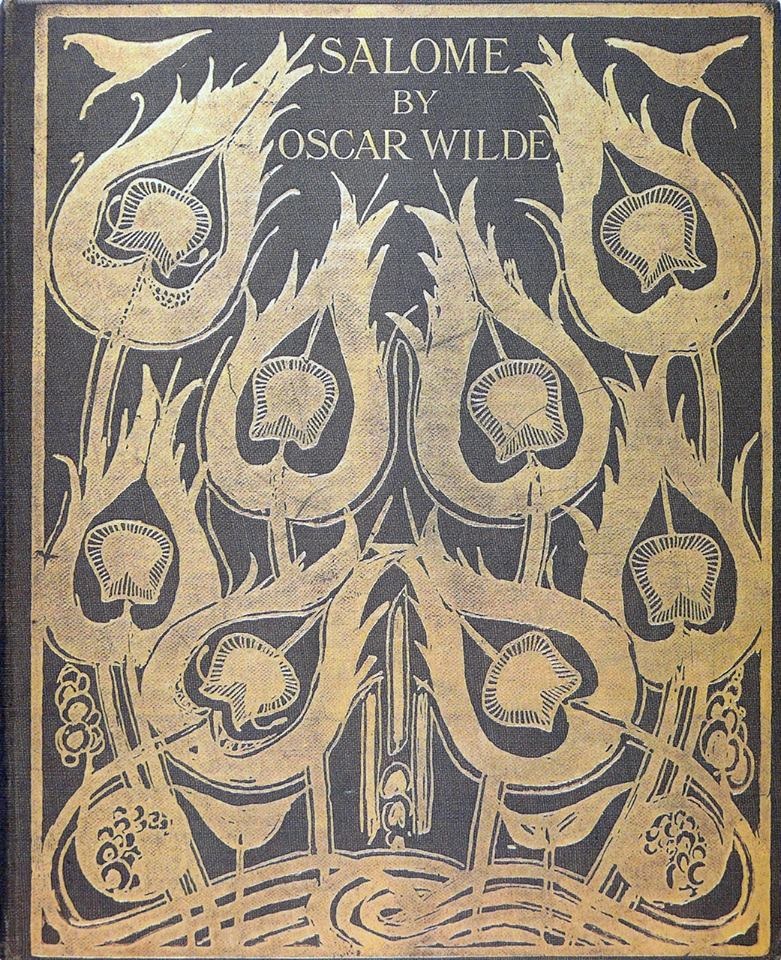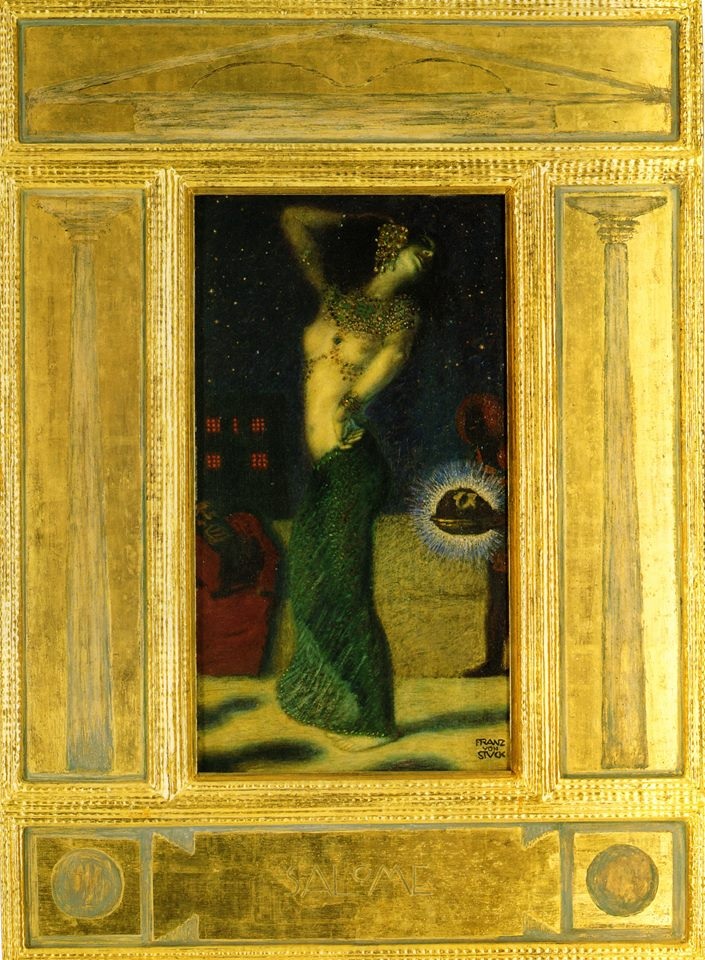"There is no sound. I hear nothing. Why does he not cry out, this man?
Ah! if any man sought to kill me, I would cry out, I would struggle, I would not suffer....
Strike, strike, Naaman, strike, I tell you....
No, I hear nothing. There is a silence, a terrible silence. Ah!"
- Salome.
Ah! if any man sought to kill me, I would cry out, I would struggle, I would not suffer....
Strike, strike, Naaman, strike, I tell you....
No, I hear nothing. There is a silence, a terrible silence. Ah!"
- Salome.
In 1904 Oscar Wilde’s play Salome was produced in Munich, followed shortly after by Richard Strauss’s opera Salome. In 1906 Franz von Stuck painted three versions of Salome (Voss 310), each showing Salome dancing, offering her nude body frontally, head twisted backwards over her shoulder. In preparation, Stuck or his wife Mary took a series of photographs of a model posing in front of a white canvas, stretched in a dark frame. The vertical columns of the dark frame, as it appears in the photo, might have been on Adolf Frey-Mook’s mind when he established the rigidly vertical figure of his Salome. He borrowed from Stuck the radiant head of John the Baptist, which in turn might have been inspired by Gustave Moreau’s Apparition of 1876. Frey-Moock’s color juxtaposition of dark shadows and glowing flesh are reminiscent of Stuck’s Sin (Die Sünde,1892), an omnipresent icon of the 1890’s to 1910’s (Stuck painted at least twelve versions of it). In fact, Stuck displayed Sin as an altar piece in the very studio where Frey-Moock was working as an assistant in 1906.







 RSS Feed
RSS Feed





